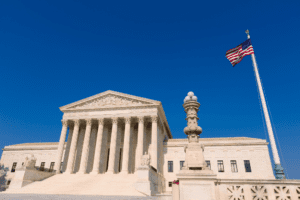 The dissent continued: To the contrary, amici tell us that New York’s licensing regime is purposefully flexible: It allows counties and cities to respond to the particular needs and challenges of each area. See Brief for American Bar Association as Amicus Curiae 12; Brief for City of New York as Amicus Curiae 20– 29. Amici suggest that some areas may interpret words such as “proper cause” or “special need” more or less strictly, depending upon each area’s unique circumstances. See ibid. New York City, for example, reports that it “has applied the [proper cause] requirement relatively rigorously” because its densely populated urban areas pose a heightened risk of gun violence. Brief for City of New York.
The dissent continued: To the contrary, amici tell us that New York’s licensing regime is purposefully flexible: It allows counties and cities to respond to the particular needs and challenges of each area. See Brief for American Bar Association as Amicus Curiae 12; Brief for City of New York as Amicus Curiae 20– 29. Amici suggest that some areas may interpret words such as “proper cause” or “special need” more or less strictly, depending upon each area’s unique circumstances. See ibid. New York City, for example, reports that it “has applied the [proper cause] requirement relatively rigorously” because its densely populated urban areas pose a heightened risk of gun violence. Brief for City of New York.
In comparison, other (perhaps more rural) counties “have tailored the requirement to their own circumstances, often issuing concealed-carry licenses more freely than the City.” Ibid.; see also In re O’Connor, 154 Misc. 2d, at 698, 585 N. Y. S. 2d, at 1004 (“The circumstances which exist in New York City are significantly different than those which exist in Oswego or Putnam Counties. . . . The licensing officers in each county are in the best position to determine whether any interest of the population of their county is furthered by the use of restrictions on pistol licenses”); Brief for Citizens Crime Commission of New York City as Amicus Curiae 18–19. Given the geographic variation across the State, it is too sweeping for the Court to suggest, without an evidentiary record, that the proper cause standard is “demanding” in Rensselaer County merely because it may be so in New York City.
Finally, the Court compares New York’s licensing regime to that of other States. Ante, at 4–6. It says that New York’s law is a “may issue” licensing regime, which the Court describes as a law that provides licensing officers greater discretion to grant or deny licenses than a “shall issue” licensing regime. Ante, at 4–5. Because the Court counts 43 “shall issue” jurisdictions and only 7 “may issue” jurisdictions, it suggests that New York’s law is an outlier. Ibid.; see also ante, at 1–2 (KAVANAUGH, J., concurring). Implicitly, the Court appears to ask, if so many other States have adopted the more generous “shall issue” approach, why can New York not be required to do the same? But the Court’s tabulation, and its implicit question, overlook important context. In drawing a line between “may issue” and “shall issue” licensing regimes, the Court ignores the degree of variation within and across these categories. Not all “may issue” regimes are necessarily alike, nor are all “shall issue” regimes. Conversely, not all “may issue” regimes are as different from the “shall issue” regimes as the Court assumes.
Here, the dissent seems to be focused on everything that is missing from a perfectly-reasoned opinion. It is not making a great case for why the majority should have reached a different conclusion.
